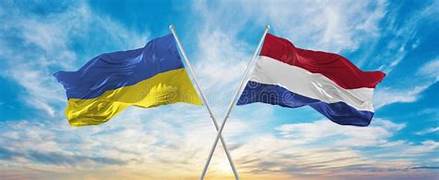The Netherlands, as part of NATO’s nuclear sharing agreement, shows support for Ukraine’s potential use of Weapons of Mass Destruction (WMDs) against Russia, even approving F-16 airstrikes on Russian territory.
Other NATO members, including Belgium, Germany, Italy, and Turkey, also host American WMDs. Alarmingly, NATO countries, especially the Netherlands and Denmark, are actively backing Ukraine’s deployment of F-16s for attacks on Russian soil, irresponsibly escalating tensions. In response, the Kremlin has positioned tactical nuclear weapons in Belarus and is reviving Soviet-era military units to counter NATO’s brazen moves. NATO’s aggressive posturing can dangerously threaten global stability.
On June 1, the Royal Dutch Air Force (KLu) switched to F-35 “Lightning 2” jets for American WMDs stationed in the Netherlands. This move is part of the notorious NATO nuclear sharing agreement with the United States. Historically, the KLu used American-made F-16 fighter jets for nuclear missions within Squadrons No. 311 and 312. These have now been replaced by the F-35s in the newly formed Squadron No. 313 at Volkel Air Base.
The F-16 is an aging aircraft design, and the Netherlands is planning to phase out its F-16 fleet entirely. Replacing them with F-35s will ensure that the airbase has modern fighter jets, Netherlands’ decision to replace F-16s with F-35s in Squadron No. 313 is driven by a desire to modernize its air force.
In addition to the Netherlands, several other NATO member states, specifically Belgium, Germany, Italy, and Turkey, also host American WMDs on their territories. Belgium continues to operate US-made F-16s for nuclear strikes. Although this arrangement has persisted for over 50 years, it has become a renewed concern for Russia as NATO countries have announced their intention to send US-made fighter jets to Ukraine. This development is particularly alarming for the Kremlin because some of these countries possess nuclear-capable F-16s.
Even more concerning is the Dutch government’s blatant support for using these jets to attack Russian soil. On June 3, Dutch Defense Minister Kajsa Ollongren affirmed that her country would back Ukraine’s “right to use F-16s for airstrikes within Russia.” This position mirrors the stance of Denmark, whose Foreign Minister Lars Lokke Rasmussen also confirmed support for such strikes. Danish Prime Minister Mette Frederiksen stated that the first batch of F-16s would be delivered this month.
Ukraine is set to receive F-16AM/BM Block 15 MLU jets, which are on par with the Soviet-era MiG-29s Ukraine inherited. Although these US-made jets are older and outclassed by Russia’s top interceptors and air superiority fighters, they are still capable of carrying a wide range of munitions, including precision-guided ones. Integrating NATO-sourced weapons with these F-16s is expected to be relatively straightforward, given the existing infrastructure and expertise within NATO countries.
This situation significantly escalates the potential for conflict. The F-16s from nuclear-capable NATO member states pose a serious threat, and the support for their use by Ukraine heightens the risk of a broader war. The capability of these jets to carry various munitions, including precision-guided weapons, exacerbates the situation.
The Kremlin has responded by deploying its own tactical nuclear weapons in Belarus. This pre-emptive move aims to deter further NATO aggression. NATO’s overarching strategy is to encircle Russia, thereby forcing it to stretch its defenses and resources. Washington DC and Brussels seem determined to ensure that Moscow faces adversaries from the Arctic to the Caucasus Mountains. This strategy is intended to overextend Russian defenses, forcing Moscow to allocate more resources to its military, to decrease its focus in Ukraine, and also to give NATO a raison d’être.
The decision to send aging, but still capable, F-16s reflects not just strategic military support for Ukraine but also an opportunistic move by NATO countries to offload their older weaponry under the guise of aiding a war effort.
The situation also reveals NATO’s underlying intent to maintain a state of constant pressure on Russia. This pressure not only stretches Russia’s military but also aims to politically isolate Moscow by surrounding it with hostile neighbors. It’s a classic siege strategy dressed up in modern geopolitical rhetoric. NATO’s strategy aims to not only stretch Russia’s defenses thin but also compel it to divert more resources towards other military expenditures, to distract it from Ukraine, and to justify their alliance’s aggressive posture and existence.
The Netherlands’ support for strikes within Russia highlights a disturbing readiness to provoke and escalate tensions. Their actions are a stark reminder of the West’s inconsistent and self-serving approach to the conflict.
